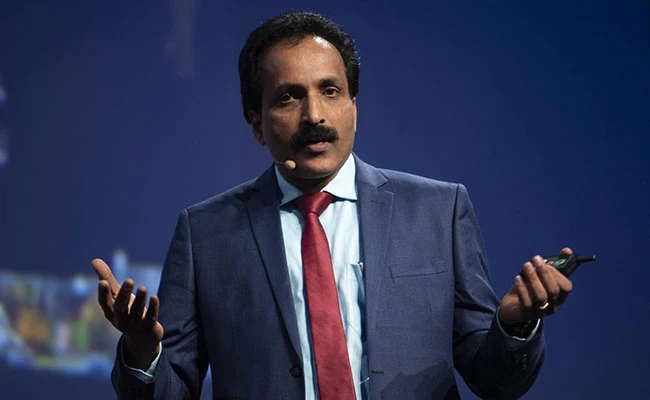
ISRO Chairman S. Somanath
In NEW DELHI: ISRO Chairman S. Somanath stated on Wednesday that the space agency is viewing the Artemis Accords as a “political engagement with the US” and that “we will like to work with the US, especially on technologies that are high-end” as a result of India signing them during Prime Minister Narendra Modi’s recent trip to the US.
On the sidelines of an IAF event, the ISRO chairman said, “It is a statement of intent that when the US is proposing collaborative work in the space sector, especially the exploration of outer planets in a very cordial atmosphere between different nations, we agree with that … We would like to work with the US, especially on technologies which are high-end and space is one of them. It will open opportunities for Indian industries which are working in the space sector to work with the US companies.”
On some unconfirmed reports of July 13 being fixed as the launch date for the Chandrayaan-3 Moon mission, Somanath said, “Currently, the window of opportunity for launch is between July 12 and 19 and we will take the earliest possible date, maybe the 12th, maybe the 13th or maybe the 14th. We will announce the exact date after all the tests are completed.”
On the lunar spacecraft, the Isro chairman said, “Currently the Chandrayaan 3 spacecraft is fully integrated … and we have completed the testing”. No exact date has been finalised till now for the Chandrayaan-3 launch as “such a crucial mission requires a lot of approvals at various levels and so many checks are also required”.
Chandrayaan-3 will be a lander rover-specific mission and the focus of the lunar mission will be to land on the lunar surface, which, if ISRO is successful this time, will put India in the club of elite nations that had already landed on Moon. The ISRO chairman stated regarding the Aditya L1 solar mission, “We are targeting that by August-end, Aditya can go.” A halo orbit will be created for the spacecraft around the Lagrange point 1 (L1), which is located roughly 1.5 million kilometers from Earth. The main benefit of having a satellite in the halo orbit is that it may continuously observe the Sun without experiencing any eclipses. This will provide us a better opportunity to watch the solar activity and how it affects the space weather in real-time.
(This story has not been edited by Bharat Express staff and is auto-generated from a syndicated feed.)

















